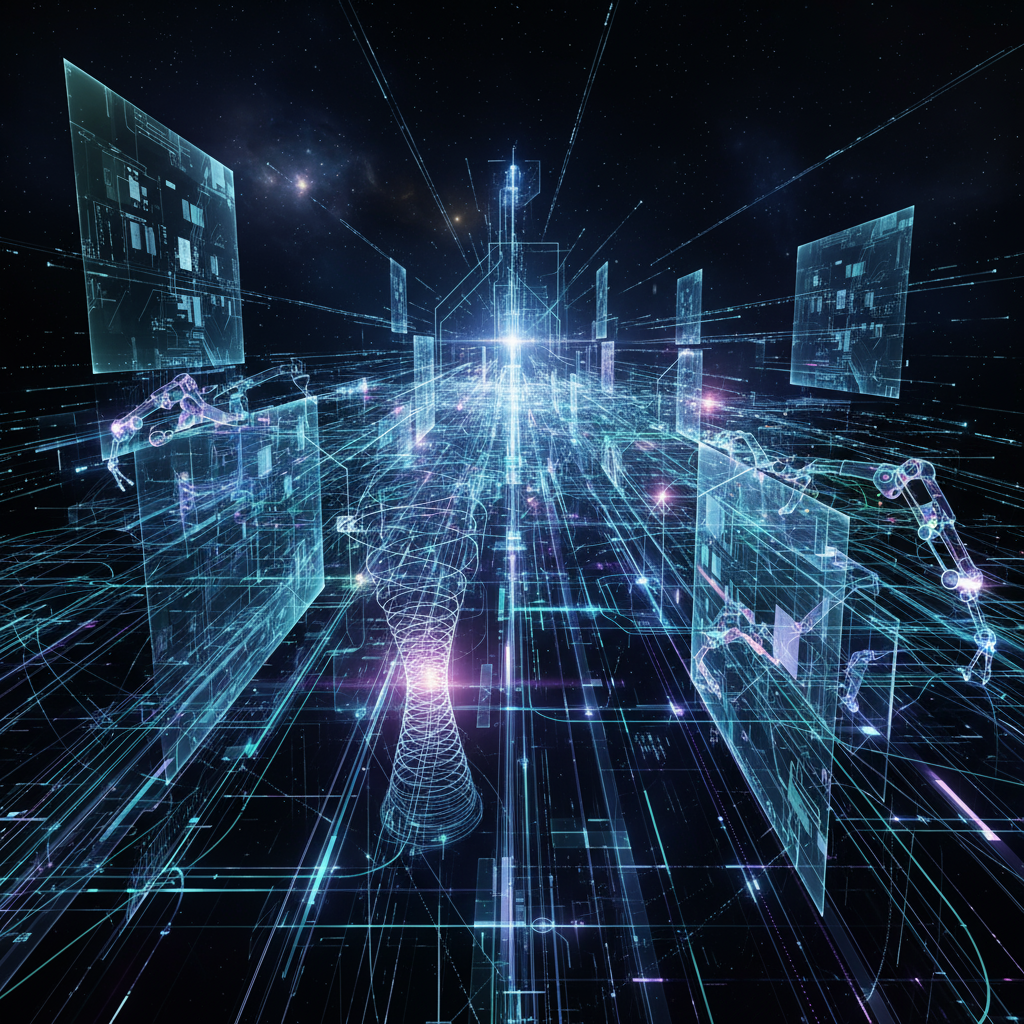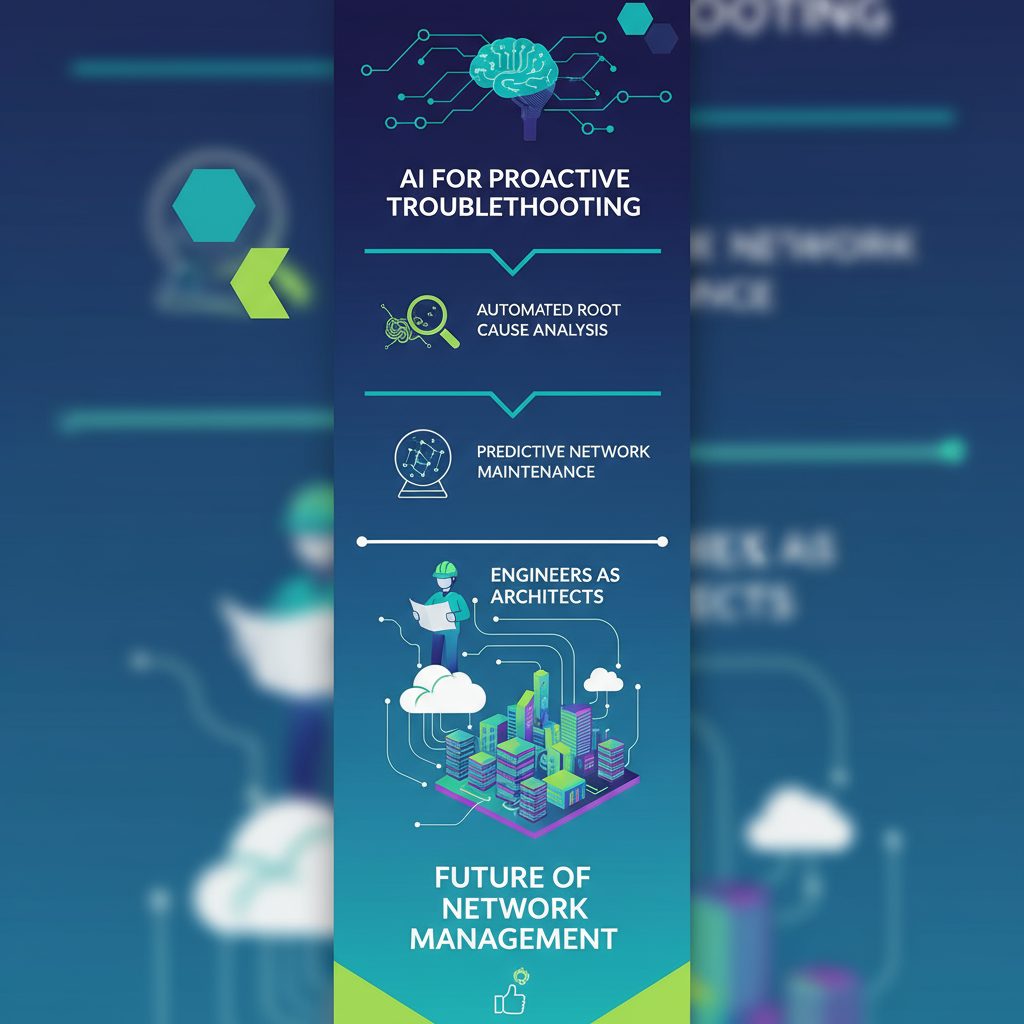
In the ever-evolving landscape of technology, network troubleshooting has always been a critical, yet often reactive, discipline.
For years, network engineers have tirelessly worked to diagnose and resolve issues, often under immense pressure.
However, a significant shift is underway, driven by the rapid advancements in Artificial Intelligence (AI) and automation.
These powerful technologies are not just augmenting human capabilities;
they are fundamentally transforming the way we approach network management and troubleshooting, moving us from reactive fixes to proactive, intelligent solutions.
The complexity of modern corporate networks has grown exponentially.
The traditional on-premises infrastructure has given way to intricate ecosystems encompassing cloud environments,
a proliferation of SaaS applications, and the widespread adoption of ‘work from anywhere’ models.
This distributed and dynamic nature makes pinpointing the root cause of performance issues a daunting task,
often involving multiple layers from an employee’s device and their local Wi-Fi to corporate networks, cloud providers, and intermediary ISPs [1].
This complexity underscores the urgent need for more sophisticated and efficient troubleshooting mechanisms.
This blog post will delve into how AI and automation are reshaping the field of network troubleshooting.
We will explore the transformative impact of these technologies, examine specific AI-powered tools and their applications, and discuss the evolving role of network engineers in this automated future.
Get ready to discover how AI is not just a tool, but a game-changer, promising a future where network issues are predicted, prevented, and resolved with unprecedented speed and accuracy.

The Rise of AI in Network Operations
AI’s integration into network operations is driven by its ability to process vast amounts of data, identify patterns, and make intelligent decisions at speeds far beyond human capacity.
This capability is particularly valuable in network troubleshooting, where timely and accurate diagnosis is paramount.
AI-powered solutions are designed to demystify complex diagnostic logs and provide actionable insights, significantly reducing the time and effort traditionally spent on root cause analysis [1].
One of the primary benefits of AI in this domain is its capacity for enhanced monitoring.
By strategically placing additional capture points and analyzing traffic patterns, AI can provide a comprehensive view of network health.
This proactive monitoring allows for the detection of anomalies in real-time, enabling swift responses before minor issues escalate into major outages.
AI can also guide engineers in collecting relevant data for troubleshooting, suggesting optimal configurations for packet captures and recommending tools like Wireshark for in-depth analysis [2].
Furthermore, AI excels at identifying inefficiencies and bottlenecks within the network.
It can recommend optimization strategies such as traffic shaping to prioritize critical data or route optimization methods to reduce latency.
This predictive and prescriptive capability transforms network management from a reactive firefighting exercise into a proactive, strategic endeavor.
Automation: The Engine of Efficiency
Automation, powered by AI, is the key to unlocking unprecedented efficiency in network troubleshooting.
Repetitive and time-consuming tasks that once consumed valuable engineering hours can now be automated, freeing up human experts to focus on more complex problems and strategic initiatives.
This shift is not about replacing engineers, but empowering them with tools that streamline their workflow and enhance their problem-solving abilities.
Automated diagnostics, for instance, can quickly pinpoint the root causes of network issues, significantly reducing the mean time to resolution (MTTR).
This is achieved by automating the collection and analysis of diagnostic data, which traditionally required manual effort and specialized expertise.
For example, tools like Cloudflare’s WARP diagnostic analyzer can demystify extensive diagnostic logs, providing clear summaries of events impacting performance and connectivity [1].
Beyond diagnosis, automation extends to resolution.
AI tools can provide step-by-step instructions for resolving identified problems and even generate configuration scripts to address hardware-related issues.
Imagine a scenario where a router misconfiguration is causing packet loss;
an AI-powered system could not only identify the problem but also generate the precise commands needed to correct it, or even apply them automatically [2].
This level of automation minimizes human error and accelerates the resolution process, ensuring network stability and optimal performance.
AI-Powered Tools in Action
Several innovative AI-powered tools are already making a significant impact in the network troubleshooting space.
These tools leverage machine learning algorithms to analyze network data, predict potential issues, and provide actionable recommendations.
One such example is Cloudflare’s WARP diagnostic analyzer.
This AI-driven tool simplifies the troubleshooting of WARP client connectivity and performance issues by analyzing extensive diagnostic logs.
It provides a Cloudy summary of events, highlights common issues, and offers detailed explanations with recommended resources.
This empowers network administrators to quickly decipher complex diagnostic information and take control of troubleshooting [1].
Another powerful application is the Model Context Protocol (MCP) server for Digital Experience Monitoring (DEX).
This allows network security practitioners to ask natural language questions about device and network performance,
and the MCP server responds with customized graphs and insights.
This eliminates the need for extensive data pipeline building and dashboard creation, providing a streamlined analytics experience.
For instance, an IT admin can inquire about a specific user’s device performance, and the MCP server will analyze connection status, WARP mode, client version,
and performance metrics like HTTP response times and DNS resolution speeds to identify potential issues [1].
Beyond these specific examples, AI is being used to enhance various aspects of network troubleshooting:
Predictive Analytics: AI models can analyze historical network data to predict potential failures or performance degradation before they occur.
This allows network teams to proactively address issues, preventing downtime and ensuring continuous service availability.
Anomaly Detection: AI algorithms can identify unusual patterns in network traffic or behavior that might indicate a security breach, a misconfiguration, or an impending hardware failure.
This goes beyond traditional threshold-based alerting, catching subtle deviations that human operators might miss.
Root Cause Analysis Automation: By correlating events across different network layers and devices,
AI can automatically pinpoint the exact cause of an issue, significantly reducing the time spent on manual investigation.
Automated Remediation: In some cases, AI can even initiate automated remediation actions,
such as reconfiguring a device, rerouting traffic, or isolating a compromised segment of the network.
This capability is crucial for maintaining network stability in fast-paced environments.
The Evolving Role of Network Engineers
The advent of AI and automation in network troubleshooting does not diminish the role of network engineers; rather, it elevates it.
The focus shifts from reactive, manual tasks to more strategic and analytical responsibilities.
Network engineers will evolve into architects of automated systems, designers of AI-driven solutions, and interpreters of complex data insights.
Their expertise will be crucial in:
Designing and Implementing AI Solutions: Engineers will be responsible for selecting, deploying, and customizing AI tools to fit their organization’s specific network infrastructure and operational needs.
This includes defining data inputs, training AI models, and integrating AI solutions with existing network management systems.
Interpreting AI Insights: While AI can provide recommendations and insights, human oversight remains essential.
Engineers will need to interpret the outputs of AI systems, validate their findings,
and make informed decisions based on a holistic understanding of the network and business context.
Developing Automation Workflows: Engineers will design and implement automation scripts and workflows that leverage AI capabilities.
This involves understanding network protocols, device configurations, and scripting languages to create efficient and reliable automated processes.
Strategic Planning and Optimization: With AI handling routine troubleshooting, engineers can dedicate more time to strategic initiatives such as network capacity planning,
security posture enhancement, and optimizing network performance for emerging technologies like 5G and IoT.
Collaboration and Knowledge Sharing:
The complexity of modern networks necessitates strong collaboration between different IT teams.
Network engineers will play a vital role in fostering cross-functional communication and sharing their expertise to ensure seamless operations.
In essence, network engineers will transition from being primarily troubleshooters to becoming network strategists and innovators.
Their deep understanding of network fundamentals, coupled with their ability to leverage AI and automation, will be invaluable in building and maintaining the resilient, high-performing networks of the future.
Conclusion
The future of network troubleshooting is undeniably intertwined with the advancements in Artificial Intelligence and automation.
These technologies are not merely tools; they are catalysts for a fundamental transformation in how we manage and maintain our increasingly complex digital infrastructures.
By automating routine tasks, providing predictive insights, and enabling rapid root cause analysis,
AI empowers organizations to move beyond reactive problem-solving to a proactive, intelligent approach.
This shift brings immense benefits: reduced downtime, improved operational efficiency, enhanced security, and a more stable network environment.
For network engineers, it signifies an exciting evolution of their role, demanding new skills in AI integration, data interpretation, and strategic planning.
Far from being replaced, network engineers are poised to become even more critical, leveraging AI to build and manage the sophisticated networks that will power the next generation of technological innovation.
The journey towards fully autonomous network troubleshooting is ongoing, but the progress made so far is remarkable.
As AI continues to mature, we can anticipate even more sophisticated solutions that will further streamline operations, predict challenges with greater accuracy, and ultimately ensure the seamless flow of information that is vital to our interconnected world.
References
[1] Cloudflare. (2025, August 29). Troubleshooting network connectivity and performance with Cloudflare AI.
[2] LiveAction. (2023, October 27). AI Recommendations for Network Issue Resolution
